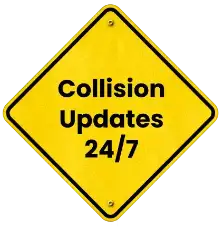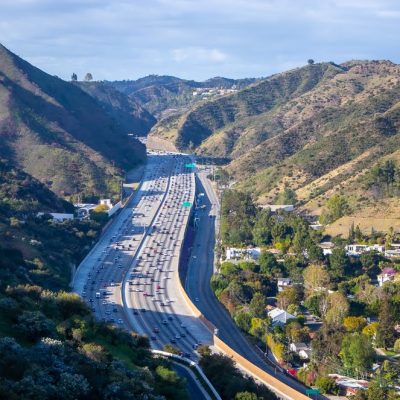
Motorcycle Accidents on I-20


Interstate 20 stretches from West Texas to South Carolina, cutting across several states and serving as a vital east–west transportation link in the southern United States. It passes through major cities such as Dallas, Birmingham, Atlanta, and Columbia, while also covering long rural stretches that connect smaller communities. Because of its length and importance, I-20 carries a constant flow of vehicles, including motorcycles, which are an integral part of the traffic mix.
Across different parts of I-20, news reports frequently document collisions involving motorcycles, ranging from single-vehicle crashes to multi-vehicle incidents. These accidents can occur in both urban and rural sections of the interstate, underscoring that the risks are present throughout the corridor. The consequences tend to be severe, drawing attention from local communities and highlighting the ongoing need for safety measures and awareness.
Common Causes of Motorcycle Accidents
Motorcycle accidents along I-20 are a persistent safety concern. National data consistently shows that motorcyclists face a much higher risk of serious injury or death compared to occupants of passenger cars, and this reality is reflected on heavily traveled interstates like I-20. When accidents occur, they not only affect the individuals involved but also often lead to significant traffic delays, emergency responses, and heightened awareness about roadway safety.
These accidents on I-20 are influenced by the same risks riders face nationwide, but the unique nature of this highway intensifies those dangers.
One of the most common causes is limited visibility. I-20 passes through several congested metropolitan areas, including Dallas, Birmingham, and Atlanta, where constant merging, heavy commuter traffic, and multilane interchanges make it easy for drivers to overlook motorcycles. Lane changes at high speeds, especially in dense traffic, frequently lead to collisions when drivers fail to see riders in blind spots.
Excessive speed and sudden braking are also leading factors. The long rural portions of I-20 often tempt drivers to travel faster, but traffic tends to back up quickly when entering city areas. For motorcyclists, this shift from wide-open roads to heavy, stop-and-go conditions raises the chances of rear-end collisions or losing control. Close following by riders or abrupt braking by drivers in these situations heightens the danger for everyone.
Heavy truck traffic creates additional risks on I-20. As a major freight route across the southern U.S., the interstate sees constant tractor-trailer activity. Motorcyclists riding near or between these massive vehicles may end up in blind spots, get pushed by air turbulence, or be at risk when trucks require extended stopping distance. Crashes between motorcycles and large trucks on interstates are often particularly devastating.
Weather and road conditions on I-20 add to the dangers. Sudden storms in Texas and Louisiana can cut visibility, while downpours in Georgia and South Carolina leave the roadway slick. Debris like truck tire fragments creates even greater hazards for motorcycles than for cars. When combined with high speeds, these factors can quickly result in serious crashes.
Advice for Drivers and Riders
Given the risks along I-20, both riders and drivers can take important steps to reduce the chance of accidents.
For motorcyclists, the most effective safety measure is wearing a DOT-approved helmet and protective gear every time they ride. High-visibility clothing and reflective elements can make a rider easier to spot in dense traffic, especially near large interchanges where blind spots are a constant threat. Riders should also maintain safe following distances and avoid lingering next to tractor-trailers, where wind turbulence and blind zones create additional hazards.
Adjusting speed with changing conditions is an important safety measure. On wide rural sections, motorcyclists should resist the urge to ride too fast, and as they near congested cities like Dallas, Atlanta, or Birmingham, they should prepare for quick traffic slowdowns. Making these adjustments early provides extra time to respond and helps prevent abrupt braking or losing control.
For truck and passenger vehicle drivers, staying alert is vital. Because motorcycles are smaller and less visible, it’s important to check mirrors and blind spots before merging or switching lanes.
Giving riders extra distance is equally crucial. Therefore, avoid tailgating and allow space for them to move safely through traffic or bad weather. In rain, storms, or low visibility, reducing speed and keeping headlights on improves safety for all, in particular for motorcyclists.
Overall, safe travel on I-20 depends on attentiveness, patience, and respect among all road users. When riders make themselves visible and cautious, and when drivers actively watch out for motorcycles, the risks of this busy interstate can be significantly reduced.
How a Lawyer Can Help

Determining liability involves identifying every party that may share responsibility. On a busy highway, this could include a driver who failed to check a blind spot, a trucking company that allowed unsafe practices, or even a city or county if dangerous road conditions or poor signage played a role. By uncovering these factors, an attorney makes sure fault is assigned appropriately, rather than unfairly blaming the motorcyclist.
This careful process is essential because insurance companies often try to paint riders as inherently reckless in order to reduce or deny compensation. With solid evidence, an attorney can dispute those claims, clearly show who was at fault, and build a strong case for damages. Establishing liability in this way lays the groundwork for recovering medical expenses, lost income, and other costs following a motorcycle crash.
Contact an I-20 Motorcycle Accident Lawyer
If you or someone you care about has been injured in a motorcycle crash or serious accident on I-20, you don’t have to face the challenges alone. With heavy traffic, complicated interchanges, and constant commercial trucking, accidents on this highway are often complex, and claims can be tough to handle. An experienced I-20 motorcycle accident lawyer can thoroughly investigate, determine who is at fault, and pursue the compensation you deserve for medical expenses, lost income, and recovery needs.
